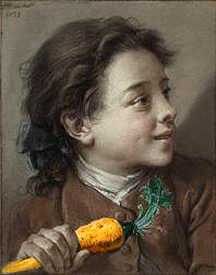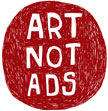2.16.2007
When I was in my first year of grad school, I did an observation in an art classroom at a city school in Philadelphia. I sat down next to this one kid, Frank, who was absently drawing in his sketchbook. I don't remember what he was drawing, I just remember that he looked bored out of his skull.
After watching him for a few minutes, I asked him how it was going. He shrugged. Somehow, I got him talking about his artwork, and eventually he told me that he didn't really care for his art class because the teacher didn't allow him to do "his own work". I asked him what he meant by that. Frank looked around to make sure the 'coast was clear', and pulled a second sketchbook out of his bag. It was filled with all kinds of Graffiti style drawings that were out-of-this-world.
Frank was in ninth grade, and had already been arrested once for doing his art on buildings.
When I began teaching video in New York, every year I would take my students to the American Museum of the Moving Image and PS1 out in Astoria, Queens. AMMI has a wonderful interactive permanent exhibit about how both video and film is created. P.S.1 often has some great video art. Together, they make a great day in the city for a film, video, or multimedia class. However, across from P.S.1. is Five Pointz, an old warehouse that is literally covered with the most beautiful artwork of all shapes, sizes, and styles. When you see something that you really like, snap a picture, because it may be painted over with a new composition the next time you go by.
Five Pointz, you should know, is run by an artists' collective, and people obtain permits before they pick up their spray cans. One of the guys who runs the place found us on a self-guided tour of the outside one day (at that point I didn't even know what it was exactly). He was overjoyed to see us and told us that we could call and make an appointement the next time to add it to our Queens Field Trip itinerary (no charge). Great opportunity! The first time I took my students there, they were just in awe of the quality and quantity of the work. Each time we'd come back from the museums, we'd always spend some time talking about the graffiti. I knew I had students who were into graffiti, and have always been thinking about it as a philosophical problem: they were really into this art form, but in a way that could potentially get them in to trouble. What to do? I can't say for sure, but I think the discussions helped. We didn't even get into the ethics that often- usualy the students were more interested in talking about what artists can do when they get together on a project. One other thing I did was open my room to graffiti stenciling. This wasn't a "calculated move" to deal with the "graffiti issue". I saw it was something that the students were interested in, I didn't want them getting in trouble, and frankly, it made my room look a lot more interesting. This picture is of the "graff pillar" in my room.
I can't say for sure, but I think the discussions helped. We didn't even get into the ethics that often- usualy the students were more interested in talking about what artists can do when they get together on a project. One other thing I did was open my room to graffiti stenciling. This wasn't a "calculated move" to deal with the "graffiti issue". I saw it was something that the students were interested in, I didn't want them getting in trouble, and frankly, it made my room look a lot more interesting. This picture is of the "graff pillar" in my room.
Something that I have often wondered about is how the digital age affects the culture of graffiti artists. Certainly, graffiti is made by people who want to be recognized, and have their work seen. The internet, however, gives artists the opportunity to have their work seen by many more people than who might walk by the wall they've covered. 
Zewall is an online graffiti art program. Like artpad you are very limited in your tools. In fact your only tools are six customizeable spray paint cans. You don't even get an eraser (just like in real life). You can choose the kind of wall you want to paint, including subway cars.
When you are done with your painting, up it goes on the website, placed on a wall (or subway car) next to other ones.
I want the kids to love art as much as I do, and their enthusiasm is what makes my job worthwhile. This is a tough issue. The art room is a sanctuary for many students, and a place they can feel free to express themselves. That's why the discussion has to happen there, with the students.
Perhaps Zewall can be a discussion starter, or perhaps it will just be a fun site to visit in between projects.
Anyway, that brings open-source / shareware week to a close. I hope you've found some things that you can use.
Tags: Digital Art, Open Source, Pedagogy, street art














